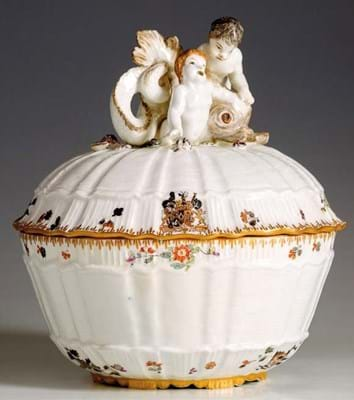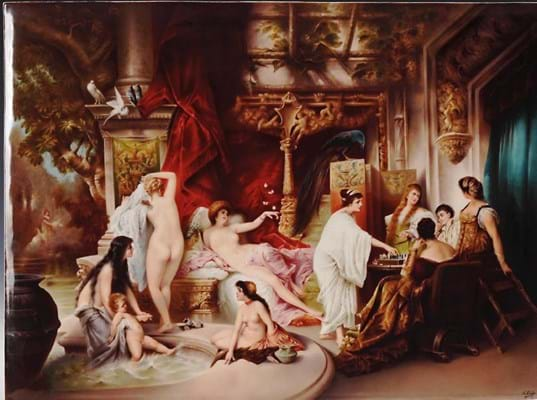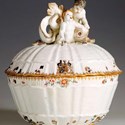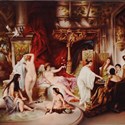It was made between 1737-42 for the First Minister of Saxony, Count Heinrich von Brühl, and takes its name from the relief of two swans that adorns each piece.
Brühl was also director of Meissen and among his privileges was the right to commission porcelain without being obliged to pay for it. The count made good use of this perk: the complete service, designed and modelled by Johann Joachim Kaendler and Johann Friedrich Eberlein, encompassed more than 2000 pieces.
They remained in possession of the family for 200 years until the closing stages of the Second World War, when Russian troops occupied the family residence near Brody, in what is now Poland. At least half the service was subsequently destroyed when soldiers blew their way into the walled-up cellar where the family had hidden their valuables. Many other pieces were damaged.
What was saved later found its way into private and museum collections around the world. Pieces at auction regularly bring high prices, so it was no surprise that the relatively cautious estimate of €2000 for a 7in (18cm) high bowl with cover, offered by Spik (15% buyer’s premium) in a sale in Berlin on September 27-29, attracted numerous bidders. In the event, a private collector outpaced the competition with his closing bid of €44,000 (£38,940).
Porcelain painter
Very little is known about the porcelain and ivory painter Anton Knye, who was active in the late 19th and early 20th century, other than that he was the son of a porcelain painter and worked in Lauscha for the factory of Ems and Greiner, before setting up his own workshop.
Judging by his known works, his main source of unpainted porcelain was the royal porcelain factory, KPM, in Berlin. This certainly applies to a 20in x 2ft 2in (51 x 66cm) plaque which was part of the October 26-28 sale at Wendl (19% buyer’s premium) in Rudolstadt. It was decorated with a harem scene with several odalisques, bathing, relaxing or playing chess.
The painting can be dated to 1900-10 and was signed by the artist.
The guide price of €3900 proved to be exceedingly tempting and on auction day, 16 phone bidders did battle with dealers and collectors in the room.
At the close of play the price reached €30,000 (£26,550), bid by a Russian collector, living in Berlin.


















